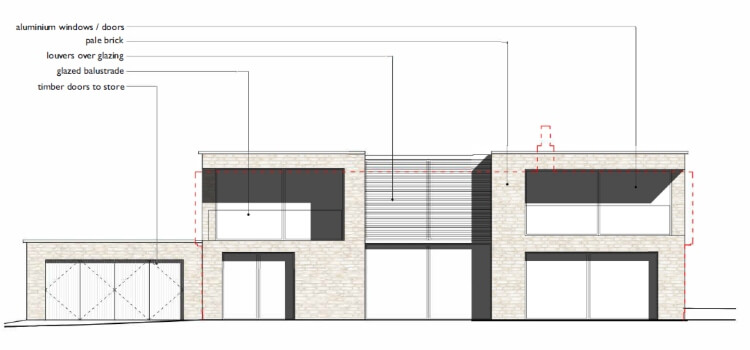Removal of an agricultural tie to create a market house in the countryside
Maximising redundant agricultural buildings by removing agricultural ties.

The Brief
Our clients came to us because they wanted to make the best use of an underused building on their site in the South Downs National Park. The building in question was originally built in the mid-20th century for staff accommodation or accommodation for agricultural workers. The occupiers of the building were restricted by a legal agreement, which meant that only persons employed at the main house or those who work in agriculture could live there. As a result of this agreement, the clients could not sell or use the property for any other purposes.
The client’s aspiration was to remove the agricultural tie and gain a new market dwelling on their land to maximise its value. The proposal, therefore, sought to demolish the detached dwelling and to replace it with an independent three-bedroom dwelling.
Our Solution
The main constraint to the development was that the site was positioned in open countryside where planning policy restricts new development. Previous pre-application advice had outlined that the Council would not accept any new dwellings in this location. Despite the advice, Atlas Planning Group were instructed to submit a planning application to demonstrate that the Council were incorrect in their assessment.
Whilst the proposed dwelling essentially created a new market dwelling in the open countryside, a property already existed on site, albeit it was tied to the main residence. We argued that the development would not increase traffic movements and showed that there was no real difference between a ‘tied’ dwelling or an unrestricted market dwelling.

Nevertheless, despite our arguments which outlined that the development was sustainable, utilising a redundant building that no longer served a suitable purpose, the application was refused by the Local Planning Authority.
Our arguments, incorporating diagrams, photographs and precedents, were presented in a comprehensive Planning Statement that supported the full planning application.
Project Success
At appeal, common sense prevailed, and the Inspector allowed the development. The Inspector agreed with our arguments and appeal precedents, which were presented in a robust Statement of Case. The Statement of Case counter-argued the points raised within the Officer Report and demonstrated that the proposal would not represent an isolated form of development. It would bring an empty house back into residential use and accorded with the Government’s intention to significantly boost housing in the UK.

Moreover, there was not found to be any impact on the character and appearance of the area, despite its position within the National Park. Whilst the new dwelling was positioned in the countryside where new residential units are resisted, the conflict with the development plan was outweighed by other material considerations.

